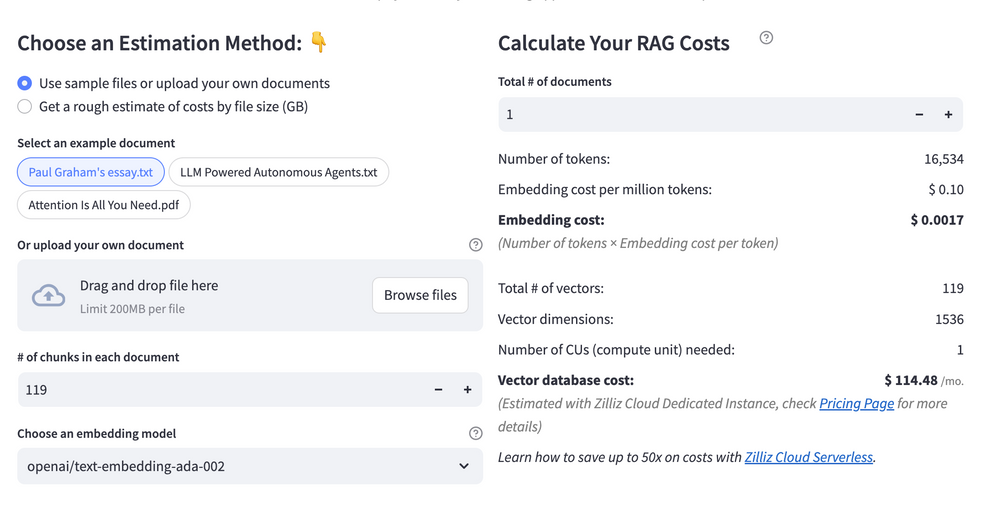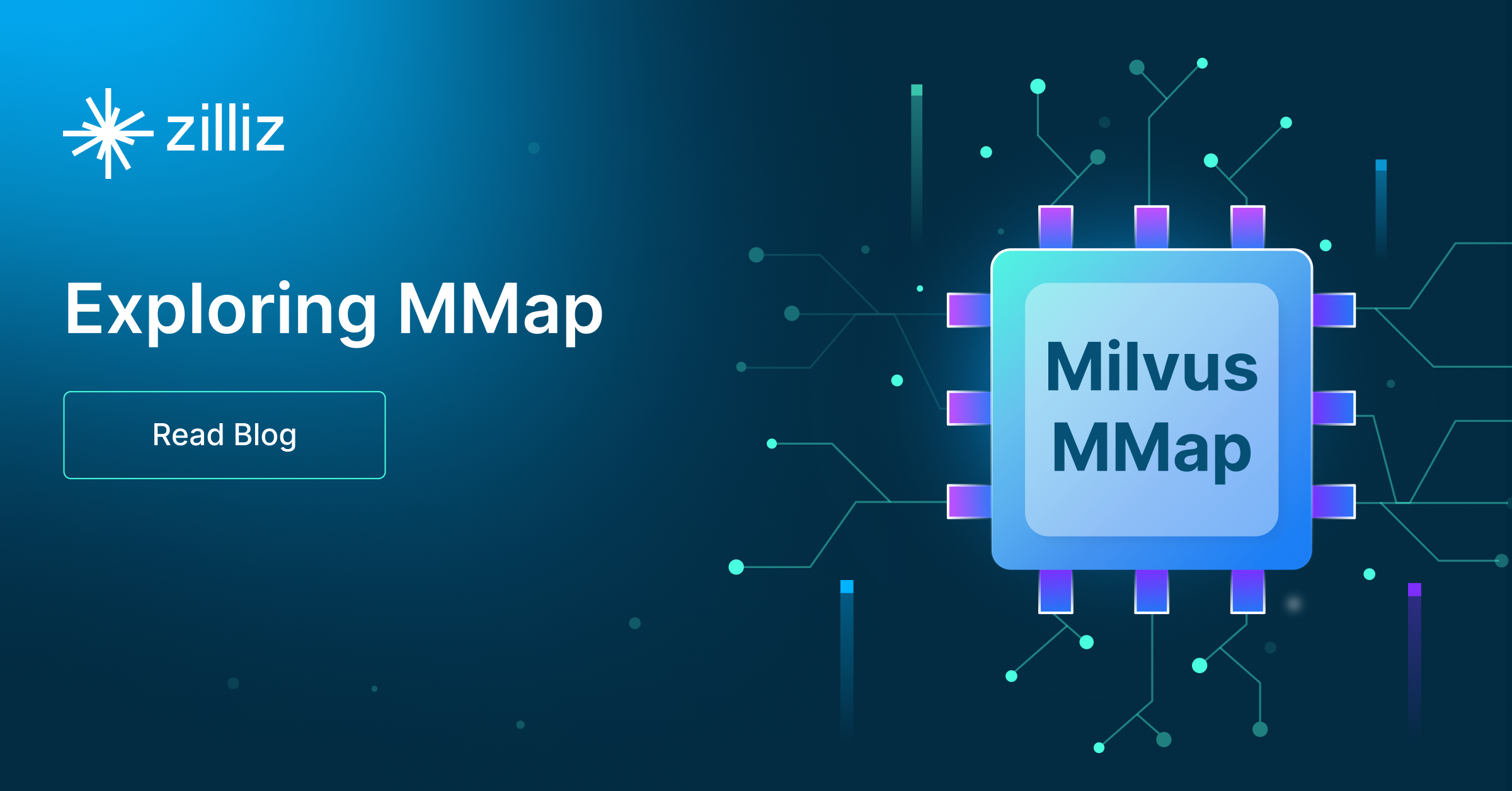Build RAG Chatbot with Haystack, OpenSearch, OpenAI GPT-o1, and jina-colbert-v2
Introduction to RAG
Retrieval-Augmented Generation (RAG) is a game-changer for GenAI applications, especially in conversational AI. It combines the power of pre-trained large language models (LLMs) like OpenAI’s GPT with external knowledge sources stored in vector databases such as Milvus and Zilliz Cloud, allowing for more accurate, contextually relevant, and up-to-date response generation. A RAG pipeline usually consists of four basic components: a vector database, an embedding model, an LLM, and a framework.
Key Components We'll Use for This RAG Chatbot
This tutorial shows you how to build a simple RAG chatbot in Python using the following components:
- Haystack: An open-source Python framework designed for building production-ready NLP applications, particularly question answering and semantic search systems. Haystack excels at retrieving information from large document collections through its modular architecture that combines retrieval and reader components. Ideal for developers creating search applications, chatbots, and knowledge management systems that require efficient document processing and accurate information extraction from unstructured text.
- OpenSearch: An open-source search and analytics suite derived from Elasticsearch. It offers robust full-text search and real-time analytics, with vector search available as an add-on for similarity-based queries, extending its capabilities to handle high-dimensional data. Since it is just a vector search add-on rather than a purpose-built vector database, it lacks scalability and availability and many other advanced features required by enterprise-level applications. Therefore, if you prefer a much more scalable solution or hate to manage your own infrastructure, we recommend using Zilliz Cloud, which is a fully managed vector database service built on the open-source Milvus and offers a free tier supporting up to 1 million vectors.)
- OpenAI GPT-1: A foundational transformer-based language model designed for natural language understanding and generation. Strengths include coherent text generation, contextual comprehension, and adaptability to diverse NLP tasks. Ideal for text completion, basic conversational agents, and early-stage language research, serving as a precursor to more advanced models like GPT-3 and GPT-4.
- Jina-ColBERT-v2: A dense passage retrieval model optimized for semantic search and document ranking. It combines ColBERT's contextualized late interaction with efficient indexing, delivering high accuracy in understanding query intent and matching relevant text. Ideal for large-scale enterprise search, Q&A systems, and content discovery platforms requiring nuanced semantic understanding and rapid retrieval.
By the end of this tutorial, you’ll have a functional chatbot capable of answering questions based on a custom knowledge base.
Note: Since we may use proprietary models in our tutorials, make sure you have the required API key beforehand.
Step 1: Install and Set Up Haystack
import os
import requests
from haystack import Pipeline
from haystack.components.converters import MarkdownToDocument
from haystack.components.preprocessors import DocumentSplitter
from haystack.components.writers import DocumentWriter
Step 2: Install and Set Up OpenAI GPT-o1
To use OpenAI models, you need to get an OpenAI API key. The Haystack integration with OpenAI models uses an OPENAI_API_KEY environment variable by default. Otherwise, you can pass an API key at initialization with api_key:
generator = OpenAIGenerator(api_key=Secret.from_token("<your-api-key>"), model="gpt-4o-mini")
Then, the generator component needs a prompt to operate, but you can pass any text generation parameters valid for the openai.ChatCompletion.create method directly to this component using the generation_kwargs parameter, both at initialization and to run() method. For more details on the parameters supported by the OpenAI API, refer to the OpenAI documentation.
Now let's install and set up OpenAI models.
from haystack.components.generators import OpenAIGenerator
generator = OpenAIGenerator(model="o1", api_key=Secret.from_token("<your-api-key>"))
Step 3: Install and Set Up jina-colbert-v2
pip install jina-haystack
from haystack_integrations.components.embedders.jina import JinaTextEmbedder
from haystack_integrations.components.embedders.jina import JinaDocumentEmbedder
text_embedder = JinaTextEmbedder(api_key=Secret.from_token("<your-api-key>"), model="jina-colbert-v2")
document_embedder = JinaDocumentEmbedder(api_key=Secret.from_token("<your-api-key>"), model="jina-colbert-v2")
Step 4: Install and Set Up OpenSearch
If you have Docker set up, we recommend pulling the Docker image and running it.
docker pull opensearchproject/opensearch:2.11.0
docker run -p 9200:9200 -p 9600:9600 -e "discovery.type=single-node" -e "ES_JAVA_OPTS=-Xms1024m -Xmx1024m" opensearchproject/opensearch:2.11.0
Once you have a running OpenSearch instance, install the opensearch-haystack integration:
pip install opensearch-haystack
from haystack_integrations.components.retrievers.opensearch import OpenSearchEmbeddingRetriever
from haystack_integrations.document_stores.opensearch import OpenSearchDocumentStore
document_store = OpenSearchDocumentStore(hosts="http://localhost:9200", use_ssl=True,
verify_certs=False, http_auth=("admin", "admin"))
retriever = OpenSearchEmbeddingRetriever(document_store=document_store)
Step 5: Build a RAG Chatbot
Now that you’ve set up all components, let’s start to build a simple chatbot. We’ll use the Milvus introduction doc as a private knowledge base. You can replace it your own dataset to customize your RAG chatbot.
url = 'https://raw.githubusercontent.com/milvus-io/milvus-docs/refs/heads/v2.5.x/site/en/about/overview.md'
example_file = 'example_file.md'
response = requests.get(url)
with open(example_file, 'wb') as f:
f.write(response.content)
file_paths = [example_file] # You can replace it with your own file paths.
indexing_pipeline = Pipeline()
indexing_pipeline.add_component("converter", MarkdownToDocument())
indexing_pipeline.add_component("splitter", DocumentSplitter(split_by="sentence", split_length=2))
indexing_pipeline.add_component("embedder", document_embedder)
indexing_pipeline.add_component("writer", DocumentWriter(document_store))
indexing_pipeline.connect("converter", "splitter")
indexing_pipeline.connect("splitter", "embedder")
indexing_pipeline.connect("embedder", "writer")
indexing_pipeline.run({"converter": {"sources": file_paths}})
# print("Number of documents:", document_store.count_documents())
question = "What is Milvus?" # You can replace it with your own question.
retrieval_pipeline = Pipeline()
retrieval_pipeline.add_component("embedder", text_embedder)
retrieval_pipeline.add_component("retriever", retriever)
retrieval_pipeline.connect("embedder", "retriever")
retrieval_results = retrieval_pipeline.run({"embedder": {"text": question}})
# for doc in retrieval_results["retriever"]["documents"]:
# print(doc.content)
# print("-" * 10)
from haystack.utils import Secret
from haystack.components.builders import PromptBuilder
retriever = OpenSearchEmbeddingRetriever(document_store=document_store)
text_embedder = JinaTextEmbedder(api_key=Secret.from_token("<your-api-key>"), model="jina-colbert-v2")
prompt_template = """Answer the following query based on the provided context. If the context does
not include an answer, reply with 'I don't know'.\n
Query: {{query}}
Documents:
{% for doc in documents %}
{{ doc.content }}
{% endfor %}
Answer:
"""
rag_pipeline = Pipeline()
rag_pipeline.add_component("text_embedder", text_embedder)
rag_pipeline.add_component("retriever", retriever)
rag_pipeline.add_component("prompt_builder", PromptBuilder(template=prompt_template))
rag_pipeline.add_component("generator", generator)
rag_pipeline.connect("text_embedder.embedding", "retriever.query_embedding")
rag_pipeline.connect("retriever.documents", "prompt_builder.documents")
rag_pipeline.connect("prompt_builder", "generator")
results = rag_pipeline.run({"text_embedder": {"text": question}, "prompt_builder": {"query": question},})
print('RAG answer:\n', results["generator"]["replies"][0])
Optimization Tips
As you build your RAG system, optimization is key to ensuring peak performance and efficiency. While setting up the components is an essential first step, fine-tuning each one will help you create a solution that works even better and scales seamlessly. In this section, we’ll share some practical tips for optimizing all these components, giving you the edge to build smarter, faster, and more responsive RAG applications.
Haystack optimization tips
To optimize Haystack in a RAG setup, ensure you use an efficient retriever like FAISS or Milvus for scalable and fast similarity searches. Fine-tune your document store settings, such as indexing strategies and storage backends, to balance speed and accuracy. Use batch processing for embedding generation to reduce latency and optimize API calls. Leverage Haystack's pipeline caching to avoid redundant computations, especially for frequently queried documents. Tune your reader model by selecting a lightweight yet accurate transformer-based model like DistilBERT to speed up response times. Implement query rewriting or filtering techniques to enhance retrieval quality, ensuring the most relevant documents are retrieved for generation. Finally, monitor system performance with Haystack’s built-in evaluation tools to iteratively refine your setup based on real-world query performance.
OpenSearch optimization tips
To optimize OpenSearch in a Retrieval-Augmented Generation (RAG) setup, fine-tune indexing by enabling efficient mappings and reducing unnecessary stored fields. Use HNSW for vector search to speed up similarity queries while balancing recall and latency with appropriate ef_search and ef_construction values. Leverage shard and replica settings to distribute load effectively, and enable caching for frequent queries. Optimize text-based retrieval with BM25 tuning and custom analyzers for better relevance. Regularly monitor cluster health, index size, and query performance using OpenSearch Dashboards and adjust configurations accordingly.
OpenAI GPT-01 optimization tips
To optimize OpenAI GPT-01 in a RAG setup, fine-tune prompts to include explicit instructions and structured context (e.g., “Answer using: [retrieved text]”). Limit response length with max_tokens to reduce verbosity and cost. Use a lower temperature (0.2–0.5) for factual accuracy. Preprocess retrieved documents to remove irrelevant content, ensuring inputs fit token limits. Cache frequent queries to minimize API calls. Experiment with chunking strategies for context injection and prioritize critical information at the prompt’s start or end. Monitor latency and adjust batch sizes for throughput efficiency.
jina-colbert-v2 optimization tips
To optimize jina-colbert-v2 in a RAG setup, ensure input text is preprocessed by truncating or chunking documents to fit its 512-token limit, preserving context. Use batch inference for dense embeddings to maximize GPU utilization. Fine-tune on domain-specific data to improve relevance. Leverage ColBERT’s late interaction by precomputing document embeddings and caching them for faster retrieval. Adjust the compression ratio for query-document token tensors to balance speed and accuracy. Filter irrelevant documents early using metadata to reduce computational overhead. Monitor retrieval latency and accuracy to iteratively refine parameters.
By implementing these tips across your components, you'll be able to enhance the performance and functionality of your RAG system, ensuring it’s optimized for both speed and accuracy. Keep testing, iterating, and refining your setup to stay ahead in the ever-evolving world of AI development.
RAG Cost Calculator: A Free Tool to Calculate Your Cost in Seconds
Estimating the cost of a Retrieval-Augmented Generation (RAG) pipeline involves analyzing expenses across vector storage, compute resources, and API usage. Key cost drivers include vector database queries, embedding generation, and LLM inference.
RAG Cost Calculator is a free tool that quickly estimates the cost of building a RAG pipeline, including chunking, embedding, vector storage/search, and LLM generation. It also helps you identify cost-saving opportunities and achieve up to 10x cost reduction on vector databases with the serverless option.
 Calculate your RAG cost
Calculate your RAG cost
What Have You Learned?
By diving into this tutorial, you’ve unlocked the power of building a RAG system from the ground up! You learned how Haystack acts as the backbone framework, seamlessly connecting the dots between components. OpenSearch stepped in as your trusty vector database, storing and retrieving context-rich embeddings generated by jina-colbert-v2—a model that shines at capturing semantic nuances. Then, OpenAI’s GPT-4 took center stage, transforming retrieved context into coherent, human-like responses. The magic happened when these pieces clicked together: indexing your data, embedding it for search, querying with precision, and generating answers that feel almost alive. Along the way, you picked up pro tips like optimizing chunk sizes for better retrieval and balancing speed with accuracy using hybrid search strategies. And let’s not forget the free RAG cost calculator—your secret weapon for estimating expenses and scaling smarter, not harder!
Now, you’re equipped to turn theory into action. Imagine the possibilities: chatbots that understand deeply, search engines that read minds, or apps that anticipate user needs. You’ve got the tools, the know-how, and even a roadmap to optimize and innovate. The world of RAG is yours to explore—so why wait? Start experimenting, tweak those parameters, and watch your ideas come to life. Every line of code you write brings you closer to building something groundbreaking. Ready, set, build—your next big project is just a prompt away! 🚀
Further Resources
🌟 In addition to this RAG tutorial, unleash your full potential with these incredible resources to level up your RAG skills.
- How to Build a Multimodal RAG | Documentation
- How to Enhance the Performance of Your RAG Pipeline
- Graph RAG with Milvus | Documentation
- How to Evaluate RAG Applications - Zilliz Learn
- Generative AI Resource Hub | Zilliz
We'd Love to Hear What You Think!
We’d love to hear your thoughts! 🌟 Leave your questions or comments below or join our vibrant Milvus Discord community to share your experiences, ask questions, or connect with thousands of AI enthusiasts. Your journey matters to us!
If you like this tutorial, show your support by giving our Milvus GitHub repo a star ⭐—it means the world to us and inspires us to keep creating! 💖
- Introduction to RAG
- Key Components We'll Use for This RAG Chatbot
- Step 1: Install and Set Up Haystack
- Step 2: Install and Set Up OpenAI GPT-o1
- Step 3: Install and Set Up jina-colbert-v2
- Step 4: Install and Set Up OpenSearch
- Step 5: Build a RAG Chatbot
- Optimization Tips
- RAG Cost Calculator: A Free Tool to Calculate Your Cost in Seconds
- What Have You Learned?
- Further Resources
- We'd Love to Hear What You Think!
Content
Vector Database at Scale
Zilliz Cloud is a fully-managed vector database built for scale, perfect for your RAG apps.
Try Zilliz Cloud for Free


